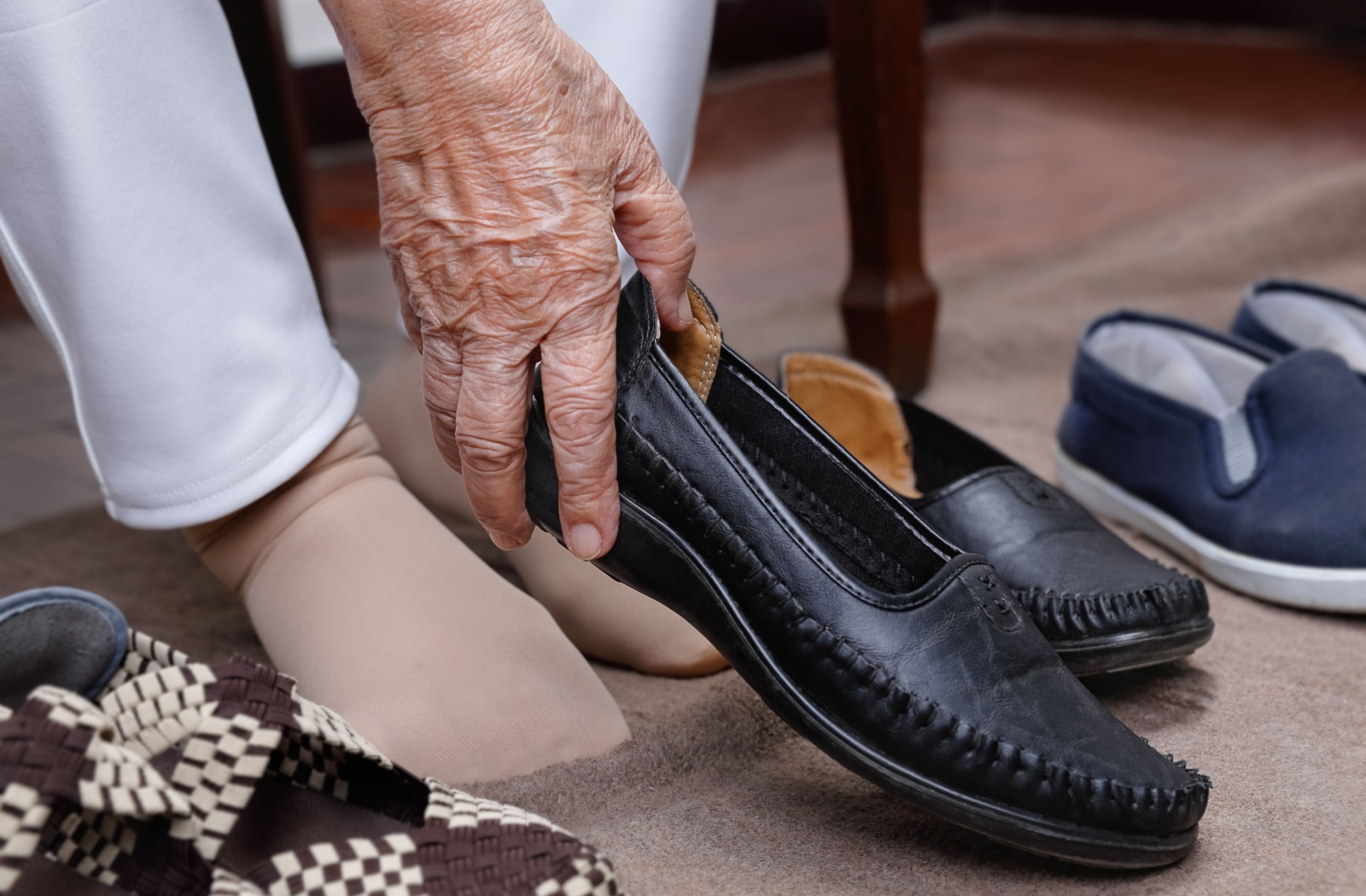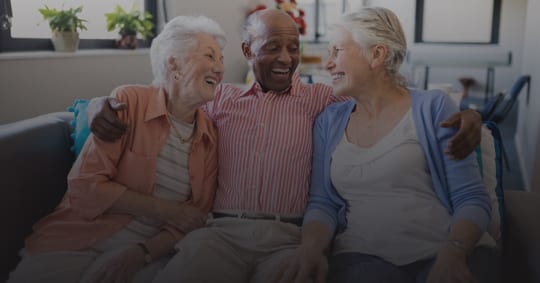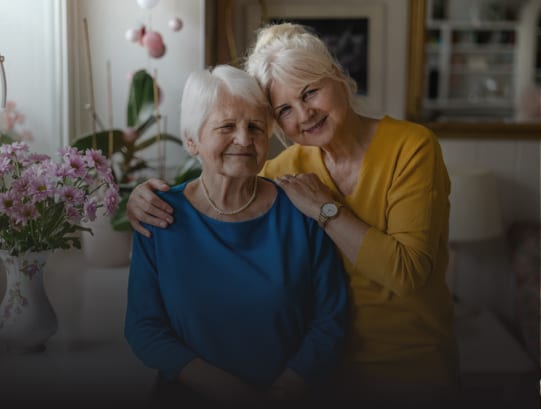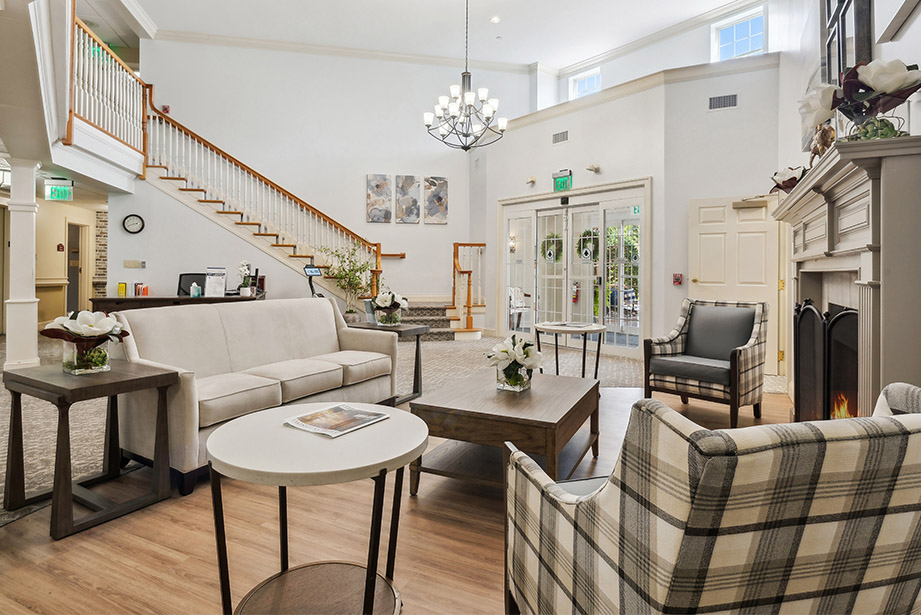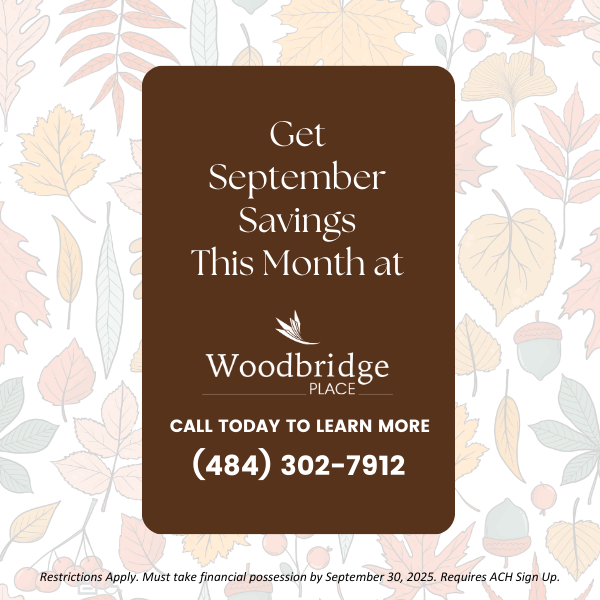As we age, our bodies experience a myriad of changes, and our feet are no exception. For older adults, finding the right shoes is not just a matter of comfort; it’s a crucial aspect of maintaining mobility for daily living tasks, preventing injuries, and enhancing the overall quality of life.
Shoes for an elderly woman can include:
- Orthopedic shoes
- Slip-on shoes
- Adjustable shoes
- Non-slip shoes
Whether you’re an older adult living in a senior community, a caregiver, or an adult child looking out for your loved one, understanding the importance of proper footwear can make a difference.
The Impact of Foot Health on Older Adults
Aging brings about changes in foot shape, size, and function. Other risk factors leading to foot problems include gender, obesity, improper footwear, physical activity, and underlying age-related conditions.
As a result, foot problems can lead to pain and deformities in older adults and increased foot-related health risks such as falls. Early intervention may require specialized footwear that provides the necessary support and comfort to alleviate these issues.
The key changes in feet in older adults can include the following:
- Reduced fat padding: With age, feet widen, and the natural cushioning in the feet diminishes over time, making it essential to have shoes with adequate padding.
- Arthritis and joint pain: Arthritis can cause significant discomfort, necessitating shoes that offer support and reduce pressure on joints.
- Circulation issues: Poor circulation can lead to swollen feet and ankles, so shoes must accommodate these fluctuations.
- Decreased flexibility: Stiffness in the feet and lower limbs calls for shoes that are easy to put on and take off without compromising support.
Features to Look for in Shoes for Senior Women
When selecting shoes for older adults, look for features that enhance comfort, support, stability, and ease of use. Here are some key attributes to consider:
- Comfort: Look for shoes with cushioned insoles, soft lining, and breathable materials to keep feet comfortable throughout the day.
- Support: Arch support and heel stability are essential to prevent foot fatigue and reduce the risk of falls.
- Stability: Non-slip soles provide better traction and reduce the likelihood of slipping, especially on smooth surfaces.
- Ease of use: Shoes with adjustable closures, such as Velcro or elastic laces, are easier to put on and take off, making them ideal for those with limited dexterity.
Types of Shoes Recommended for Senior Women
Different types of shoes cater to various needs. Here are some options for older adults.
Orthopedic Shoes
Orthopedic shoes, designed specifically to address foot problems, offer superior support and cushioning. They are ideal for those with chronic foot conditions and aid stability and reduce falls.
Slip-On Shoes
Slip-on shoes provide convenience without sacrificing support. Look for options with stretchy materials that conform to the foot’s shape and offer a secure fit.
Adjustable Shoes
Shoes with adjustable features, such as Velcro straps or elastic laces, allow for a customizable fit, accommodating swelling and providing extra comfort.
Non-Slip Shoes
Safety is paramount for older adults and non-slip shoes with rubber soles provide excellent grip on various surfaces, reducing the risk of falls.
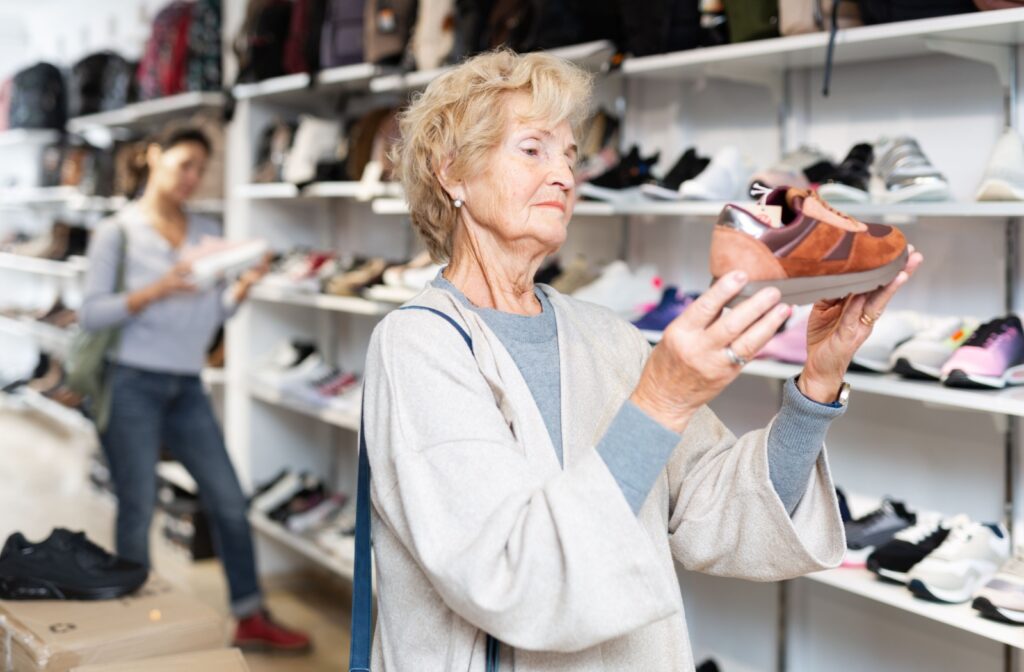
Tips for Finding the Right Shoe
Proper fitting is crucial for comfort and foot health. Here are some tips for choosing the right shoe fit for older adults:
- Measure your feet regularly: Feet can change size over time, so it’s essential to measure them regularly, especially before purchasing new shoes.
- Avoid high heels: Older women should not wear shoes with heels higher than 2-1/4 inches.
- Try shoes later in the day: Feet tends to naturally swell throughout the day. Trying shoes at the end of the day for a better fit.
- Wear the right socks: When trying on shoes, wear the type of socks you usually wear to make sure the fit is accurate.
- Check for space: Allow for a half-inch space between the toe and the end of the shoe. The shoe should also be wide enough to accommodate the foot without squeezing.
- Try both shoes: Wear both shoes and walk around to check for comfort and whether there is slipping.
The Significance of Choosing the Right Footwear
Choosing the right shoes for older adults is more than a matter of style; it’s a vital aspect of maintaining health, mobility, and independence. The right pair of shoes can prevent falls, reduce pain, and improve the overall quality of life. For caregivers and family members, investing time in finding shoes for your loved ones can make a significant difference in their daily comfort and safety.
Assistance with Daily Living for Older Adults
By understanding the unique needs of aging feet and selecting footwear that meets these requirements, we can help our loved ones stay active and independent for years to come. However, it’s essential to recognize when additional support may be needed.
If you or your loved one requires assistance with daily living activities, consider exploring senior living options that offer professional care and a supportive community. Book a tour with Woodbridge Place to explore our community and learn more about how we can support a loved one.

